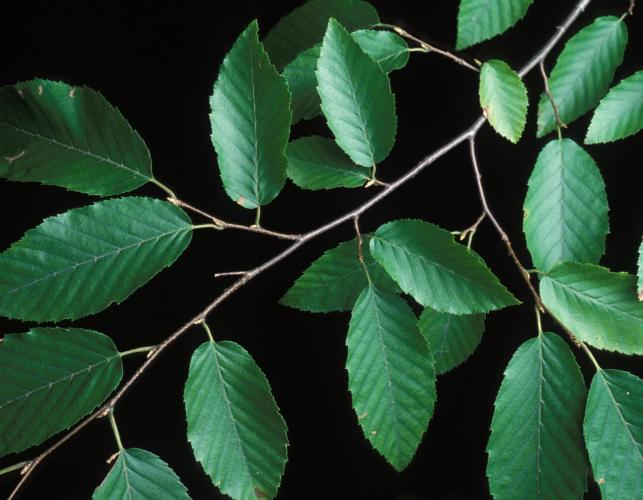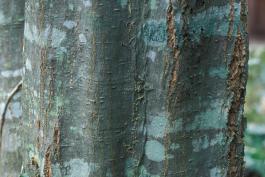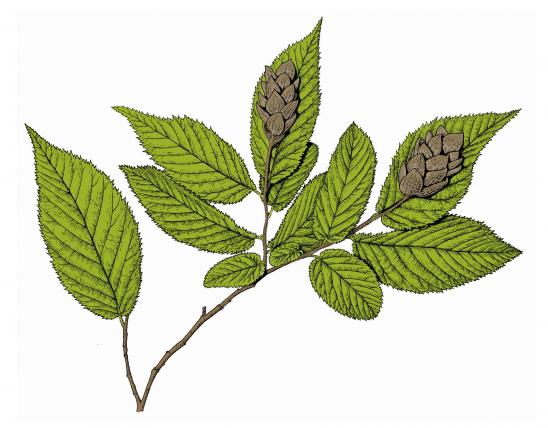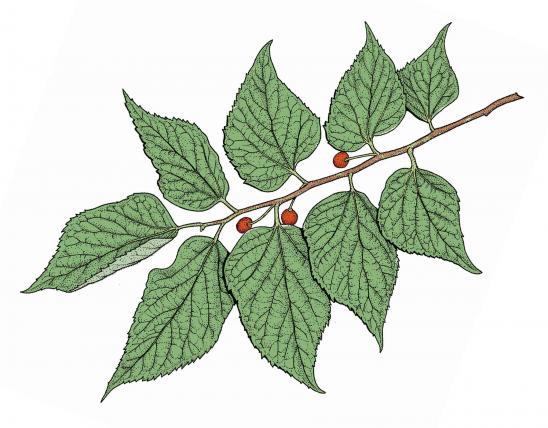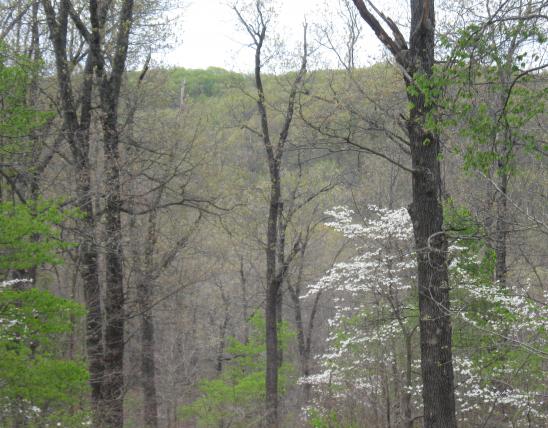
American hornbeam is a tall shrub or small tree, to 35 feet tall, with pendulous branches and a gray trunk that is fluted into musclelike ridges.
Leaves are simple, alternate, 2–5 inches long, 1–2 inches wide, with upper surface bluish green, dull; undersurface paler, mostly smooth, or with hairs in vein axils only, margins with small sharp teeth.
Bark is smooth, tight, thin, bluish gray, sometimes blotched, fluted into muscle-like ridges, hence the common name “musclewood.”
Twigs are slender, gray or red, zigzag, with small buds.
Flowers April–May; in catkins, with male and female on the same twig.
Fruit in long, hanging clusters of paired 3-lobed bracts (modified leaves), with each pair of bracts having a nutlet at its base.
Height: to 35 feet.
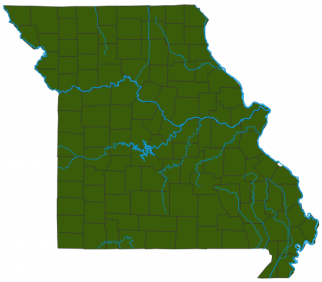
Found nearly throughout the state, except for the northern and eastern sections where trees cover less of the landscape. Cultivated statewide.
Habitat and Conservation
American hornbeam is a common indicator plant of Missouri’s upland forests. It is found in north-facing bluffs, rich woods at bases of bluffs, rocky slopes along streams, ravine bottoms, low wooded valleys, and moist woodlands. It is an understory tree that rarely grows much higher than 20 feet in the wild and often grows in clumps of several trunks.
Status
Native Missouri tall shrub or small tree. Very popular native plant for landscaping, with high ornamental, shade, and wildlife value.
Human Connections
Musclewood is one of Missouri's most popular native trees for landscaping. It makes a good shade tree, its sinewy, smooth gray bark adds real interest, and the leaves are attractive in summer and fall.
Because it is exceptionally strong and hard, the wood has been made into golf clubs, handles, fuels, cogs, levers, wedges, and more.
Ecosystem Connections
The seed is eaten by birds, including bobwhite and wild turkey, and the catkins and buds are a primary food source for ruffed grouse.
Mammals ranging from rodents and rabbits to fox and deer browse the seeds, bark, wood, and twigs.


